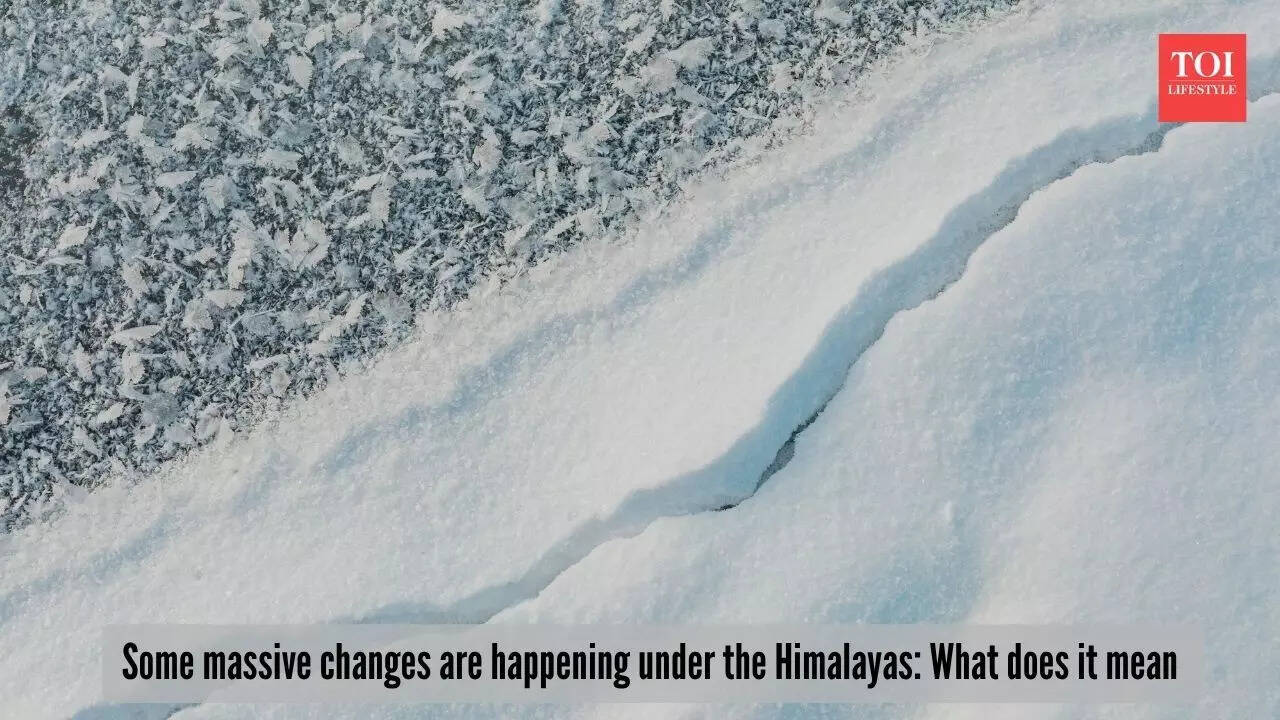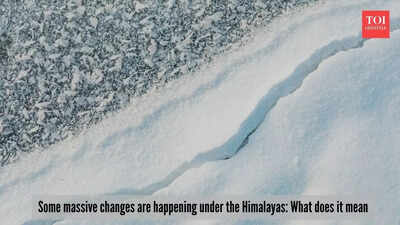The Indian tectonic plate is splitting deep under the Himalayas: Does it mean more earthquakes?

Something is happening beneath the Himalayas! Are we up for another Earthquake? A study claims to have discovered some new traits about the tectonic plates beneath the massive mountain range, will it be harmful for the region?Himalayas have their own regard in the eyes of Indian culture, they are no less than symbols of nature’s grandeur and power. And the Himalayas stand tall as one of the planet’s most iconic ranges.For decades, scientists have studied the collision between the Indian and Eurasian plates, the tectonic titans responsible for the rise of the Himalayas. While this ancient clash has been recognised as the cause behind the region’s unique topography and seismic activity, research reveals the story is more complex and ever changing than once believed.

Himalayan tectonic plates– Representative Image
The Indian plate’s dance beneath the Himalayas
The Himalayas and the Tibetan Plateau are products of one of Earth’s most powerful tectonic collisions, starting roughly 50 to 60 million years ago when the Indian Plate began pushing beneath the Eurasian Plate.For a long time, scientists believed that the Indian Plate moved as a relatively solid unit, smoothly sliding (a process called underplating) beneath Tibet’s crust. However, new three-dimensional seismic imaging using S-wave receiver function techniques has challenged this simple picture.
The Indian plate is not a big solid slab
According to recent geological study, the Indian Plate is not a uniform, unbroken slab beneath the Himalayas. Instead, it warps and tears along its length, especially around 90° to 92° east longitude, near key rift zones such as Yadong-Gulu and Cona-Sangri.In contrast to the western Himalayas where the plate remains mostly intact and slides beneath the crust about 100 kilometers north of the Yarlung-Zangbo suture, the eastern section shows noticeable changes. Here, the lithospheric mantle of the Indian Plate appears to have delaminated, meaning the dense lower part has peeled away from the upper crust and sunk deeper into the Earth’s mantle.

Himalayan tectonic plates– Representative Image
The Indian plate is in a continuous process of breaking
This peeling or delamination creates an asthenospheric wedge — a molten, soft rock zone sandwiched between the separated layers. The newly forming Tibetan lithosphere extends approximately 100 kilometers south of the suture, indicating ongoing growth and evolution of Tibet’s base. This discovery reveals that the Indian Plate beneath Tibet is not just colliding but undergoing a process of internal breaking and deformation, significantly altering how geologists understand the dynamics below this mountainous region.
Why is this region prone to frequent earthquakes
The study’s findings, supported by observations of helium gas emissions from Tibetan springs and patterns of deep earthquake activity, explain the reason behind frequent seismic events that have puzzled scientists.The tearing and delamination of the Indian Plate introduce additional stresses into the Earth’s crust that could trigger these earthquakes and contribute to the formation of rift zones.Simon Klemperer, a geophysicist at Stanford University, talked about the significance of these findings in the same study, which was also presented at teh American Geopysical Union. He said “The tearing and sinking of the plate could create new stress points in the Earth’s crust, triggering more frequent and potentially more powerful quakes.” Furthermore, the deep fractures such as those at the Cona-Sangri Rift seem directly linked to this tearing, heightening seismic risks in the area.

Himalayas — Representative Image
More research is needed for drawing conclusions
Fabio Capitanio, a geodynamicist at Monash University, notes that “It’s just a snapshot, and much more data is needed to understand the full picture,” pointing to ongoing research aimed at clarifying these complex subterranean processes.So the Indian tectonic plate hasn’t just been sliding, it has been splitting and that too for decades.








